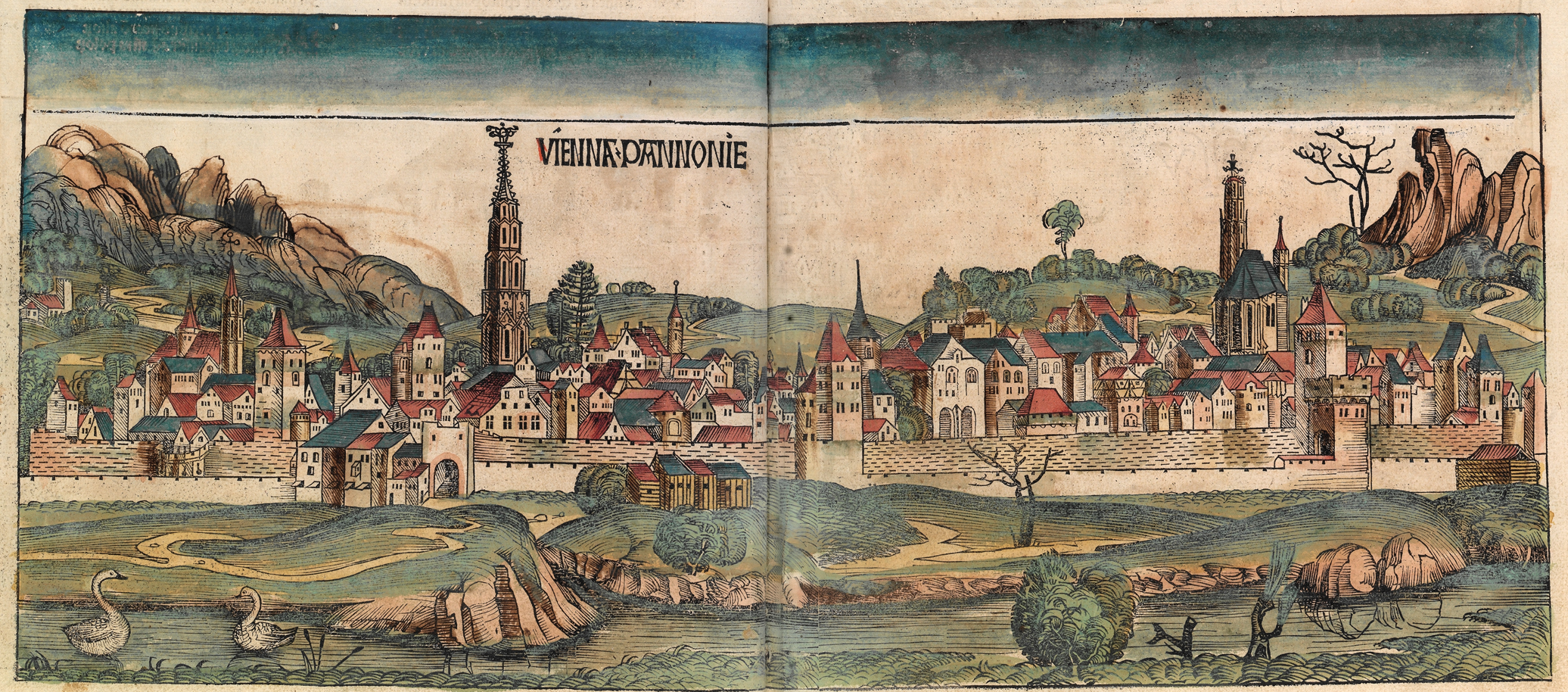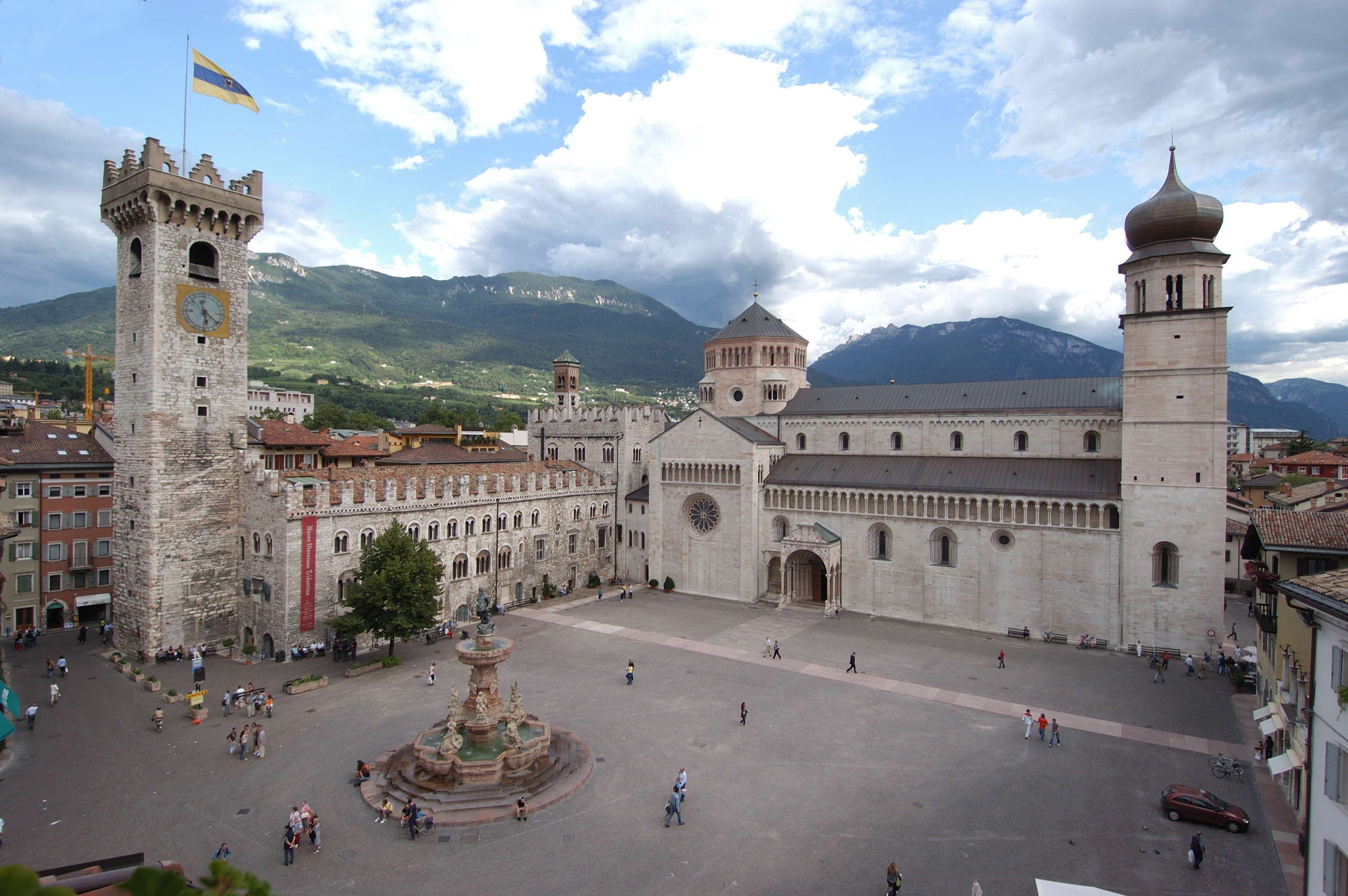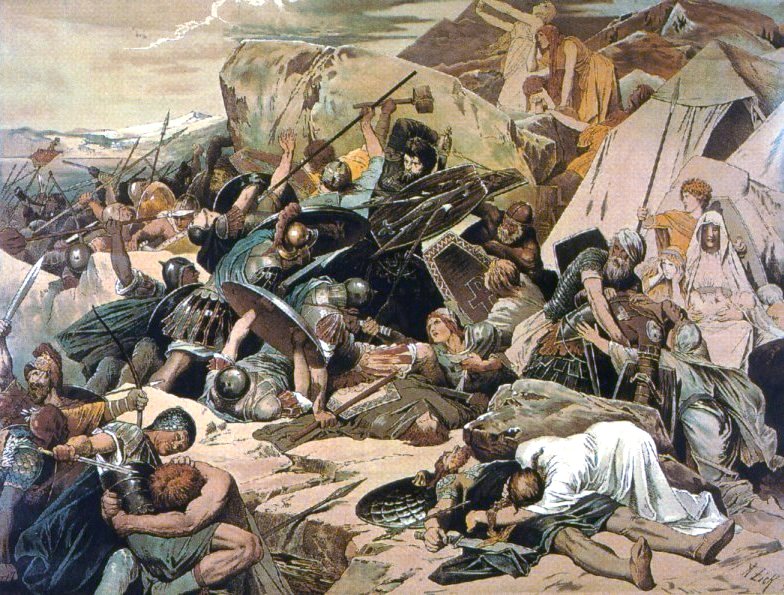|
Purple Parchment
Purple parchment or purple vellum refers to parchment dyed purple; codex purpureus refers to manuscripts written entirely or mostly on such parchment. The lettering may be in gold or silver. Later the practice was revived for some especially grand illuminated manuscripts produced for the emperors in Carolingian art and Ottonian art, in Anglo-Saxon England and elsewhere. Some just use purple parchment for sections of the work; the 8th-century Anglo-Saxon Stockholm Codex Aureus alternates dyed and un-dyed pages. It was at one point supposedly restricted for the use of Roman or Byzantine emperors, although in a letter of Saint Jerome of 384, he "writes scornfully of the wealthy Christian women whose books are written in gold on purple vellum, and clothed with gems".Needham, 21 Examples The ''Purple Uncials'' or the ''Purple Codices'' is a well-known group of these manuscripts, all 6th-century New Testament Greek manuscripts: * Codex Purpureus Petropolitanus N (022) * Sinope ... [...More Info...] [...Related Items...] OR: [Wikipedia] [Google] [Baidu] |
Lectionary
A lectionary () is a book or listing that contains a collection of scripture readings appointed for Christianity, Christian or Judaism, Jewish worship on a given day or occasion. There are sub-types such as a "gospel lectionary" or evangeliary, and an :wikt:epistolary, epistolary with the readings from the New Testament Epistles. History By the Medieval era the Jewish community had a Weekly Torah portion, standardized schedule of scripture readings from both the Torah and the prophets to be read in the synagogue. A sequential selection was read from the Torah, followed by the "haftarah" – a selection from the prophetic books or historical narratives (e.g. "Judges", "Kings", etc.) closely linked to the selection from the Torah. Jesus may have read a providentially "random" reading when he read from Isaiah 61:1–Isaiah 61:2, 2, as recorded in Luke 4:16–21, when he inaugurated his public ministry. The early Christians adopted the Jewish custom of reading extracts from the Old T ... [...More Info...] [...Related Items...] OR: [Wikipedia] [Google] [Baidu] |
Codex Purpureus Sarzanensis
The Codex Sarzanensis, or ''Codex Saretianus'', designated by j or 22 (in Beuron system), is a 5th or 6th century Latin Gospel Book. The text, written on purple dyed vellum in silver ink (as are codices '' a b e f i''), is a version of the old Latin. Dated by paleographists to the beginning of the 6th century, the manuscript is formed by 72 sheep leather scrolls with parts in gold (or silver) characters, and precious miniatures realized in Tyrian purple dye, firstly scanned as a whole in 2018., witillustrationsof the whole manuscript The best conserved sections contain Luke 24 and 292 verses of John (1:38-3:23; 3:33-5:20; 6:29-49.49-67; 6:68-7:32; 8:6-9:21), written two columns on a page, in round letters. John 18:36-20:14 was written by another hand.Bruce M. Metzger, ''The Early Versions of the New Testament'', Oxford University Press, 1977, p. 298. It has numerous lacunae. The manuscript was discovered in 1872 in the Church of Sarezzano, near Tortona. It was edited ... [...More Info...] [...Related Items...] OR: [Wikipedia] [Google] [Baidu] |
Codex Brixianus
The Codex Brixianus (Brescia, Biblioteca Civica Queriniana, s.n.), designated by f, is a 6th-century Latin Gospel Book which was probably produced in Italy. Description The manuscript contains 419 folios. The text, written on purple dyed vellum in silver ink, is a version of the old Latin translation which seems to be connected with the Gothic translation of Ulfilas. At the base of each page is an arcade very similar to that found in the Codex Argenteus. Furthermore, the Latin text shows readings which seem to be influenced by the Gothic Bible translation. Text It has some lacunae (; ; ; ). It was named Brixianus after Brescia Brescia (, ; ; or ; ) is a city and (municipality) in the region of Lombardy, in Italy. It is situated at the foot of the Alps, a few kilometers from the lakes Lake Garda, Garda and Lake Iseo, Iseo. With a population of 199,949, it is the se ... in Italy, where it is housed. In Luke 7:31, it contains the phrase "tunc ergo iesus dixit". In J ... [...More Info...] [...Related Items...] OR: [Wikipedia] [Google] [Baidu] |
Codex Palatinus
Codex Palatinus is a 5th-century manuscript of the Latin New Testament Gospels written on purple dyed parchment. It is designated by e or 2 in the Beuron register of Latin New Testament manuscripts. The text is a version of the Old Latin New Testament. Most of the manuscript was in the Austrian National Library at Vienna until 1919, when it was transferred to Trent, where it is now being kept in the Library of Buonconsiglio Castle. Two leaves were separated from the manuscript in the 18th century. One is now in the library of Trinity College, Dublin (shelf number MS 1709), the other in the British Library (shelf number Add. MS 40107) in London. Description The manuscript is a codex (precursor to the modern book format), containing the text of the four Gospels written on 230 folios (660 pages) made of vellum (sized 35.5cm x 26cm). Similar formats are to be found with other Latin New Testament codices Vercellensis (a), Veronensis (b), Brixianus (f) Vindobonensis (i), and ... [...More Info...] [...Related Items...] OR: [Wikipedia] [Google] [Baidu] |
Codex Veronensis
The Codex Veronensis, designated by the siglum b (used in the critical editions of Nestle-Åland and the UBS Greek New Testament) or 4 (in the Beuron system), is a 5th-century Latin manuscript of the four Gospels, written on vellum which has been dyed purple. The text is written in silver and occasionally gold ink, and is a version of the old Latin New Testament Gospels. The Gospels follow in the Western order. Description The manuscript is a codex (precursor to the modern book), containing the Latin text of the four Gospels written on purple parchment, with 1 column and 18 lines per page. It has several missing sections (Matthew 1:1-11; 15:12-23; 23:18-27; John 7:44-8:12; Luke 19:26-21:29; Mark 13:9-19; 13:24-16:20). On the several pages which are missing, they also include the pages which contained John 7:44-8:11. Space-considerations show that the missing pages included John 7:53-8:11, the passage known as the Pericope Adulterae. Gold ink is used for the first page of eac ... [...More Info...] [...Related Items...] OR: [Wikipedia] [Google] [Baidu] |
Codex Vercellensis
The title Codex Vercellensis Evangeliorum refers to two manuscript codices preserved in the cathedral library of Vercelli, in the Piedmont Region, Italy. Old Latin Codex Vercellensis The Old Latin Codex Vercellensis Evangeliorum, preserved in the cathedral library, is believed to be the earliest manuscript of the Old Latin Gospels. Its standard designation is "Codex a" (or 3 in the Beuron system of numeration). The order of the gospels in this Codex is Matthew, John, Luke and Mark, which is also found in some other very old "Western" manuscripts, such as Codex Bezae. In its text of Matthew 3, before verse 16, there is a statement that a light suddenly shone when Jesus was baptized (''Et cum baptizaretur, lumen ingens circumfulsit de aqua, ita ut timerent omnes qui advenerant''). It contains the last twelve verses of the Gospel of Mark, but on a replacement-page. The original final pages after Mark 15:15 have been lost, and the replacement-page resumes mid-sentence in 16:7 and i ... [...More Info...] [...Related Items...] OR: [Wikipedia] [Google] [Baidu] |
Vetus Latina
The ''Vetus Latina'' ("Old Latin" in Latin), also known as ''Vetus Itala'' ("Old Italian"), ''Itala'' ("Italian") and Old Italic, and denoted by the siglum \mathfrak, are the Latin Bible translations, translations of biblical texts (both Old Testament and New Testament) that preceded the Vulgate (the Latin translation produced by Jerome in the late 4th century). The ''Vetus Latina'' translations continued to be used alongside the Vulgate, but eventually the Vulgate became the standard Latin Bible used by the Catholic Church, especially after the Council of Trent (1545–1563) affirmed the Vulgate translation as authoritative for the text of Catholic Bibles. However, the ''Vetus Latina'' texts survive in some parts of the liturgy (e.g., the ''Pater Noster''). As the English translation of ''Vetus Latina'' is "Old Latin", they are also sometimes referred to as the Old Latin Bible,W. E. Plater and Henry Julian White, H. J. White, ''A Grammar of the Vulgate'', Oxford at the Clare ... [...More Info...] [...Related Items...] OR: [Wikipedia] [Google] [Baidu] |
Vienna
Vienna ( ; ; ) is the capital city, capital, List of largest cities in Austria, most populous city, and one of Federal states of Austria, nine federal states of Austria. It is Austria's primate city, with just over two million inhabitants. Its larger metropolitan area has a population of nearly 2.9 million, representing nearly one-third of the country's population. Vienna is the Culture of Austria, cultural, Economy of Austria, economic, and Politics of Austria, political center of the country, the List of cities in the European Union by population within city limits, fifth-largest city by population in the European Union, and the most-populous of the List of cities and towns on the river Danube, cities on the river Danube. The city lies on the eastern edge of the Vienna Woods (''Wienerwald''), the northeasternmost foothills of the Alps, that separate Vienna from the more western parts of Austria, at the transition to the Pannonian Basin. It sits on the Danube, and is ... [...More Info...] [...Related Items...] OR: [Wikipedia] [Google] [Baidu] |
Trento
Trento ( or ; Ladin language, Ladin and ; ; ; ; ; ), also known in English as Trent, is a city on the Adige, Adige River in Trentino-Alto Adige/Südtirol in Italy. It is the capital of the Trentino, autonomous province of Trento. In the 16th century, the city was the location of the Council of Trent. Formerly part of Austrian Empire, Austria and Austria-Hungary, it was annexed by Kingdom of Italy, Italy in 1919. With 118,142 inhabitants, Trento is the third largest city in the Alps and second largest in the historical region of Tyrol. Trento is an educational, scientific, financial and political centre in Trentino-Alto Adige/Südtirol, in Tyrol and Northern Italy in general. The city contains a picturesque Medieval and Renaissance historic centre, with ancient buildings such as Trento Cathedral and the Castello del Buonconsiglio. Together with other Alpine towns Trento engages in the Alpine Town of the Year Association for the implementation of the Alpine Convention to achie ... [...More Info...] [...Related Items...] OR: [Wikipedia] [Google] [Baidu] |
Sarezzano
Sarezzano (Western Lombard: ''Sarsòu'') is a ''comune'' (municipality) in the Province of Alessandria in the Italian region Piedmont, located about east of Turin and about east of Alessandria. As of 31 December 2004, it had a population of 1,171 and an area of .All demographics and other statistics: Italian statistical institute Istat. The municipality of Sarezzano contains the ''frazioni'' (subdivisions, mainly villages and hamlets) Baracca, Cucco, Palazzina, Rocca Grue, San Ruffino, and Sant'Innocenzo. Sarezzano borders the following municipalities: Berzano di Tortona, Cerreto Grue, Monleale, Montegioco, Tortona, Viguzzolo, and Villaromagnano. History Various finds have been unearthed in the municipal area, testifying to settlements from Roman times. The place was chosen as a hermitage by the monks Ruffino and Venanzio, who were buried there. Their remains, originally kept in the Parish Church of St. Michael, were later moved to the castle church. In the Middle Ages, ... [...More Info...] [...Related Items...] OR: [Wikipedia] [Google] [Baidu] |
Naples
Naples ( ; ; ) is the Regions of Italy, regional capital of Campania and the third-largest city of Italy, after Rome and Milan, with a population of 908,082 within the city's administrative limits as of 2025, while its Metropolitan City of Naples, province-level municipality is the third most populous Metropolitan cities of Italy, metropolitan city in Italy with a population of 2,958,410 residents, and the List of urban areas in the European Union, eighth most populous in the European Union. Naples metropolitan area, Its metropolitan area stretches beyond the boundaries of the city wall for approximately . Naples also plays a key role in international diplomacy, since it is home to NATO's Allied Joint Force Command Naples and the Parliamentary Assembly of the Mediterranean. Founded by Greeks in the 1st millennium BC, first millennium BC, Naples is one of the oldest continuously inhabited urban areas in the world. In the eighth century BC, a colony known as Parthenope () was e ... [...More Info...] [...Related Items...] OR: [Wikipedia] [Google] [Baidu] |






